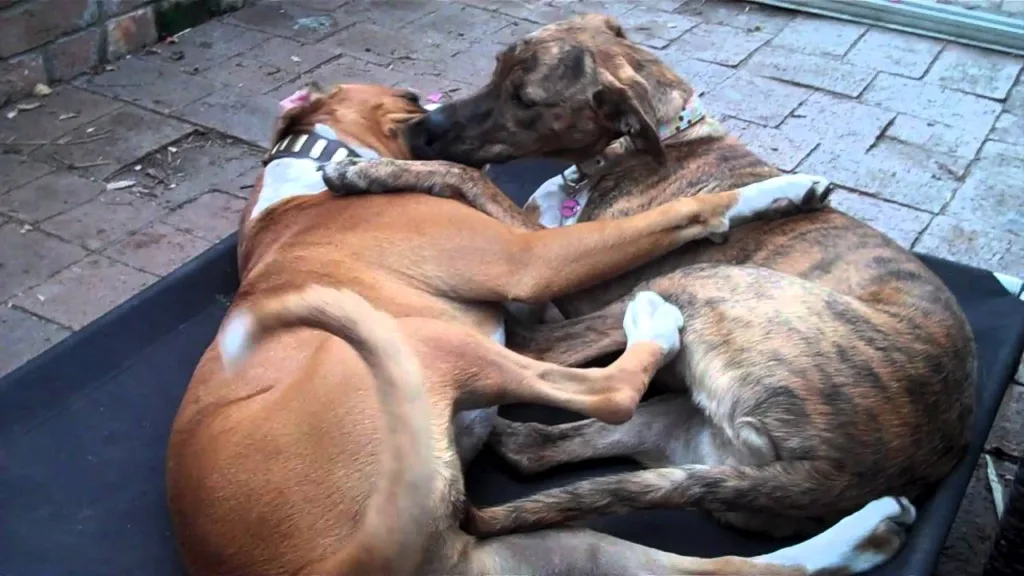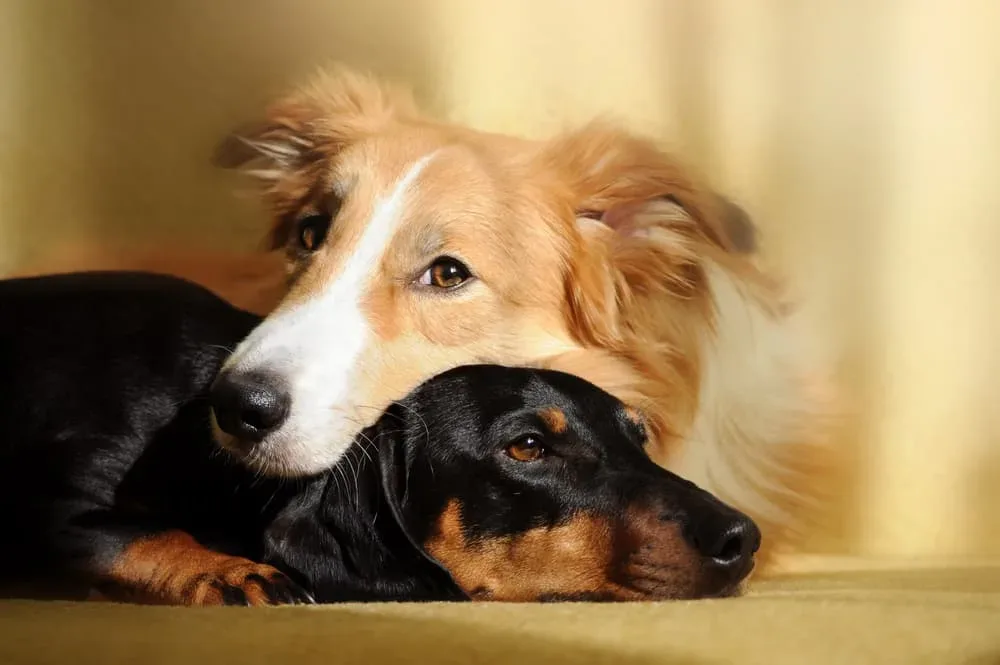The thought of transgender Dogs is not new. It dates back to ancient times when some ancient cultures felt that if one’s body did not match their soul, they were transgender.
Table of Contents
When it comes to gender identity, it’s important to understand that dogs do not have the same level of awareness or understanding as we humans do. Gender identity is a concept that relates to a person’s internal sense of their own gender, which is separate from the physical characteristics of their body.
This level of self-reflection and comprehension is not present in dogs.
However, there have been instances where dog owners have observed unusual behaviors in their dogs, leading them to believe their dogs may be transgender.
While it’s important to approach such situations with caution and consult veterinary professionals, some cases have involved dogs with intersex traits or hermaphroditism.
For example, a couple adopted a female puppy and noticed that it exhibited typical behavior. The puppy would urinate in a female position indoors but assumed a male position when outside.
Concerned, the owners sought the advice of a veterinarian who suggested that the dog could be a hermaphrodite, meaning it possesses both male and female genitalia. Further investigation revealed that the dog was intersex.
Intersex dogs may exhibit certain behaviors such as increased whining or excessive body licking compared to other dogs. Additionally, they may urinate in a male position despite having physical characteristics that resemble those of a female.
While these cases highlight the existence of intersex traits in dogs, it’s important to note that attributing human concepts of gender identity to canines can be misleading.
Dogs do not possess the same self-awareness or societal constructs regarding gender as humans do. Veterinary professionals can provide further guidance and insight into any unusual traits or behaviors observed in dogs.
Transgender dog surgery
Canines do not have this awareness. There are numerous instances, however, when owners have found their dogs to be transgender dogs, and the animals subsequently had gender reassignment surgery.
There is a good reason owners have felt their dogs be transgender dogs. Canines are not like us who are aware of our primary sex characteristics.
Each dog will have its own experience with its sense of self. Sometimes, they feel trapped in the wrong body, even though they are always in it.
A Dog is born with its primary sex organ being that which determines its primary sex characteristic.
Best Dog Costumes by Amazon
A female dog’s primary sex characteristic is her vagina while for a male dog it is his penis. This makes it easy to determine the gender of most dogs.
The issue is that dogs do not have a sense of their own gender. This is because dogs and other animals do not have the same awareness as humans.
This is because the sense of gender comes from an inner desire that links or associates with the sex of the person’s body – something that dogs do not have.
Because dogs do not have any awareness, no matter how strange the circumstances, they will continue to live as they were born either male or female.
Can Dogs be Transgender?
We can find many instances where owners have found their dogs to be transgender, but the animals were later reassigned as part of the surgery.
In cases where dogs have been diagnosed as transgender dogs, it has been found that it was a medical condition that had been caused by a hormonal imbalance.
In these situations, a veterinarian will prescribe a drug to alter the dog’s hormone levels to bring them back to normal. Only after this process, transgender dogs can come into the picture.
Training and maturity
If your dog is intersex, don’t worry. The natural instinct of a dog depends on how it is raised and trained. Dogs can be affectionate or aggressive. It depends on the environment in which the dog was raised. The behavior of any dog depends on its training.

The sex of the dog, however, affects its learning rate. The female dog is intelligent and learns quickly. They are small compared to male dogs and reach premature maturity.
Also Read: Antibiotic Treatment for Bacterial Infection in Dogs & Puppies
It is easier to train a female dog than a male dog. Understand that training has nothing to do with intelligence but depends on maturity. As females mature faster, it is also much easier to train them.
Start training immediately during puppyhood. If it is not disinfected or spade, do the process as soon as possible.
Transgender dog Symptoms
There are no specific symptoms you can observe if your dog is transgender because that is not natural. It is not uncommon to have some animals that are more transgender than we expected and have both male and female traits.
It should be remembered that the male and female sex overlap in humans and animals. Dogs are no exception.
Animals that can change their sex do this through a process called sequential hermaphroditism. Three results can be made in this regard: females are the progenitor of males, females are the progenitors of females, and an organism is born in both males and females and has the power to adapt to any gender later in life.
How do you care for a transgender dog?
Caring for a transgender dog is about providing them with a safe, supportive and loving environment just like any other dog. It is important to remember that gender identity in animals is not the same as in humans, and the concept of a transgender dog may differ from what is understood in human terms.
Here are some general guidelines for dog care:
- Veterinary Care: Regular check-ups with a veterinarian are essential for your dog’s overall health and well-being. A veterinarian can administer vaccinations, perform necessary medical procedures, and provide advice specific to your dog’s needs.
- Proper nutrition: Feed your dog a balanced and appropriate diet based on its age, size, and any specific dietary needs they may have. Consult your vet for dietary recommendations.
- Exercise and mental stimulation: Regular exercise is crucial for a dog’s physical and mental well-being. Provide opportunities for physical activities such as walks, playtime, and interactive toys to keep them engaged and entertained.
- Grooming: Regular grooming sessions are necessary to keep your dog clean and healthy. Brush their coat, trim their nails, clean their ears, and brush their teeth as recommended by your veterinarian.
- Socialization: Socialize your dog with other dogs and people to help them develop appropriate behavior and reduce anxiety. Dog training classes or socialization groups can help.
- Safety: Make sure your home and surroundings are safe for your dog. Eliminate any potential hazards, secure fences, and keep toxic materials out of reach.
Remember, the most important aspect of caring for any pet is providing love, acceptance, and a safe environment. If you have any specific concerns or questions about your dog’s health or well-being, it is always best to consult a veterinarian who can provide appropriate advice based on your dog’s individual needs.
How Can We Prevent Animal Transphobia?
Preventing animal transphobia is about promoting awareness, empathy and respect for all animals, regardless of how humans perceive or label them. Here are some tips on how to prevent animal transphobia:
- Education and Awareness: Raise public awareness of the fact that gender identity is a human concept and does not apply to animals. Educate people about the natural diversity of animals and the importance of respecting their individuality.
- Avoid anthropomorphism: While it is natural for humans to project their own experiences and understanding onto animals, it is important to recognize that animals do not experience gender identity the way humans do. Avoid assigning human gender concepts to animals and focus on understanding their unique needs and behaviors.
- Foster Inclusivity: Foster an inclusive environment that values and respects all animals regardless of their perceived gender. Encourage acceptance and celebrate the natural diversity found in the animal kingdom.
- Responsible Pet Ownership: Treat all pets with love, care and respect regardless of their perceived gender. Provide them with proper veterinary care, nutrition, exercise and socialization opportunities. Avoid imposing human expectations or gender roles on animals.
- Challenge Stereotypes: Challenge and question social norms and stereotypes about animals based on gender. Encourage conversations that foster understanding and compassion for all animals.
- Support Animal Welfare Organizations: Support organizations that promote animal welfare and work to eliminate discrimination and abuse of animals. These organizations help raise awareness, advocate for animal rights, and provide resources for responsible pet ownership.
- Encourage Compassion: Encourage empathy and compassion for animals. Teach children and adults about the importance of treating animals with kindness regardless of their perceived gender or other characteristics.
Remember, the key to preventing animal transphobia is to develop awareness, respect and empathy for all animals. By recognizing and appreciating their unique characteristics and needs, we can create a more inclusive and compassionate society for animals.






